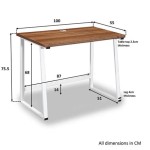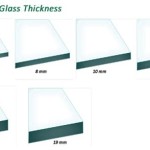Best Compost for Growing Vegetables in Containers
Growing vegetables in containers offers a flexible and accessible method for individuals with limited space, poor soil conditions, or a desire for greater control over their gardening environment. Success in container gardening hinges significantly on the quality of the growing medium used. Compost, a decomposed organic matter, forms a vital component of any effective container mix. It provides essential nutrients, improves soil structure, and promotes healthy root development, all crucial for vegetable growth. Selecting the most appropriate compost for container-grown vegetables requires careful consideration of its composition, nutrient content, and physical properties.
This article explores the various types of compost available and provides guidance on selecting the best options for growing vegetables in containers. It also examines the importance of blending compost with other ingredients to create an optimal growing medium for different vegetable varieties.
Understanding the Role of Compost in Container Gardening
Compost serves multiple critical functions within a container gardening system. Primarily, it acts as a slow-release fertilizer, providing a steady stream of essential nutrients such as nitrogen, phosphorus, potassium, and micronutrients. These nutrients are vital for plant growth, development, and fruit production. Unlike synthetic fertilizers, compost releases nutrients gradually over time, minimizing the risk of nutrient burn and promoting sustained growth.
Beyond nutrient provision, compost significantly improves the physical properties of the potting mix. It enhances water retention, preventing the mix from drying out too quickly, which is especially important in containers where drainage can be rapid. Simultaneously, compost improves drainage, preventing waterlogging and root rot. Compost also improves soil aeration, allowing plant roots to access oxygen, essential for respiration and nutrient uptake. The organic matter in compost improves the overall structure of the potting mix, making it easier for roots to penetrate and spread.
Furthermore, compost introduces beneficial microorganisms into the container environment. These microorganisms, including bacteria and fungi, play a crucial role in nutrient cycling, breaking down complex organic matter into simpler forms that plants can readily absorb. They also help to suppress soilborne diseases and pests, creating a healthier growing environment for vegetables.
Types of Compost and Their Suitability for Container Vegetables
A wide variety of compost types are available, each with its own unique composition and properties. Understanding the differences between these types is crucial for selecting the most suitable option for container-grown vegetables.
Garden compost:
Derived from decomposed garden waste, such as leaves, grass clippings, and vegetable scraps, is a readily available option. Its composition can vary greatly depending on the feedstock materials used and the composting process. Home-made garden compost might be relatively inexpensive, but it also holds a risk of not being fully composted, leading to nutrient tie-up or the introduction of weed seeds or pathogens. It is essential to ensure that garden compost is well-rotted and screened before using it in containers.Mushroom compost:
A byproduct of mushroom cultivation, it is characterized by high levels of organic matter and nutrients. It usually contains materials such as straw, gypsum, and lime. It is often alkaline, which may be beneficial for some vegetables but detrimental to others that prefer acidic conditions. Mushroom compost can also be high in salts, so it is important to use it sparingly and test the soil pH regularly.Vermicompost:
Produced by earthworms breaking down organic matter, it is a rich and highly beneficial compost. Vermicompost is known for its high nutrient content, particularly nitrogen, phosphorus, and potassium. It also contains beneficial microorganisms and growth-promoting hormones. It improves soil structure, water retention, and aeration. While vermicompost can be more expensive than other types of compost, its superior quality and beneficial properties make it an excellent choice for container gardening.Composted manure:
Derived from animal waste, such as cow, horse, or poultry manure, it is rich in nutrients and organic matter. It can significantly improve soil fertility and structure. However, it is essential to ensure that the manure is properly composted to kill pathogens and reduce odor. Fresh manure can burn plant roots and introduce harmful bacteria into the soil. Different types of manure vary in their nutrient content, with poultry manure generally being the richest. When using composted manure, it is important to consider the specific nutrient requirements of the vegetables being grown.Leaf mold:
Decomposed leaves offer a valuable soil amendment. It improves soil structure, water retention, and aeration. While it has a relatively low nutrient content compared to other types of compost, it provides a valuable source of organic matter. It is particularly beneficial for improving the drainage of heavy clay soils. It is usually slightly acidic, so it may be more suitable for acid-loving vegetables such as blueberries and potatoes.Key Considerations for Selecting the Best Compost
Choosing the right compost is the first step. However, ensuring that it is of good quality is equally important. This quality relates to its nutrient content, particle size, and overall consistency.
Nutrient content:
Different vegetables have different nutrient requirements. Leafy greens, for example, require higher levels of nitrogen than fruiting vegetables. Consider the nutrient content of the chosen compost and supplement it with other amendments if necessary. Soil testing can help determine the nutrient levels and adjust accordingly. Look for composts that are labeled with their NPK (nitrogen, phosphorus, potassium) values to help guide selection.Particle size:
Fine-textured composts are best for seed starting, while coarser composts are better for established plants. Coarse composts improve drainage and aeration, while fine composts provide better water retention. Consider the size of the container and the type of vegetable being grown when choosing compost. A mix of different particle sizes can often be beneficial.Contamination:
Ensure that the compost is free from weed seeds, pests, and diseases. Source compost from reputable suppliers to minimize the risk of contamination. Avoid using compost that contains persistent herbicides, as these can harm vegetable plants. Inspect the compost for any signs of weed seeds, pests, or diseases before using it.pH Level:
The pH level of the compost is a crucial factor to consider, as it affects the availability of nutrients to plants. Most vegetables prefer a slightly acidic to neutral pH, around 6.0 to 7.0. Test the pH of the compost before using it and adjust it if necessary. Lime can be added to raise the pH, while sulfur can be added to lower the pH. Be cautious when altering the pH of the soil, as drastic changes can harm plant roots.Blending Compost for Optimal Results:
While compost is a valuable component of any container gardening mix, it should not be used alone. Blending compost with other ingredients, such as potting soil, perlite, and vermiculite, creates an optimal growing medium that provides the best balance of nutrients, drainage, and aeration.A common blend consists of equal parts compost, potting soil, and perlite or vermiculite. Potting soil provides a base for the mix, while compost adds nutrients and improves soil structure. Perlite and vermiculite improve drainage and aeration. The specific proportions can be adjusted depending on the type of vegetable being grown and the conditions. For example, vegetables that prefer well-drained soil, such as tomatoes and peppers, may benefit from a mix with a higher proportion of perlite or vermiculite.
When blending compost, ensure that all the ingredients are thoroughly mixed together. This will ensure that the nutrients and beneficial properties are evenly distributed throughout the container. Consider adding slow-release fertilizer to the mix to provide a boost of nutrients at planting time. Always water the container thoroughly after planting to help settle the soil and encourage root growth.
By carefully considering the type of compost, its quality, and the specific needs of the vegetables, individuals can create a thriving container garden that yields a bountiful harvest.
Vegetables In Containers Rhs Gardening

No Dig Pots Diy Way To Grow Loads Of Veggies In Containers Milkwood

Growing Large Vegetable Plants In Containers Set Up Soil Mix Planting Tomatoes Peppers

Quickstart Guide To Container Vegetable Gardening Lovely Greens

20 Best Vegetables For Container Gardening Growing In The Garden

No Dig Pots Diy Way To Grow Loads Of Veggies In Containers Milkwood

Growing Vegetables In Tubs

Container Gardening Ten Easy Vegetables To Grow In Pots And How Do It Growing Family

How To Grow Vegetables In Pots Bbc Gardeners World

Quickstart Guide To Container Vegetable Gardening Lovely Greens








